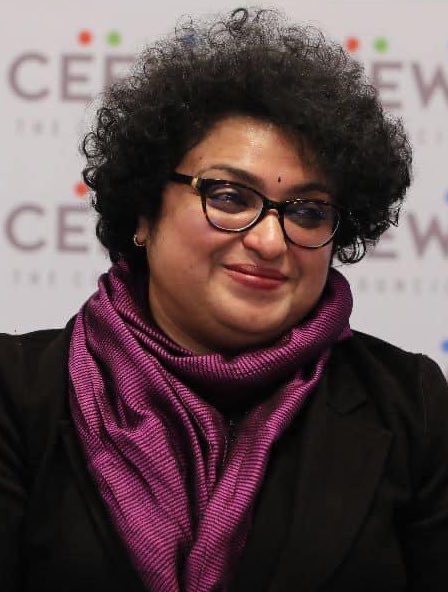“15th Finance Commission’s decision to give 12.5 per cent weightage to “demographic performance” is laudable.
India has made history as the first country ever to integrate gender in the intergovernmental fiscal transfers (IGFT) formula. The 15th Finance Commission has taken this bold decision — during its transition to use the population data 2011 instead of 1971— not to penalise the states with better demographic performance.
While social values and ethics reflected in the demographic performance of a state cannot be changed by fiscal fiats alone, particularly when patriarchy and prejudices run deep, a proactive approach by a high constitutional body like the Finance Commission (FC) has always been called for. This is especially when these prejudices — reflected in the demographic patterns — are blatantly oppressive.
Against this backdrop, the 15th Finance Commission’s decision to give 12.5 per cent weightage to “demographic performance” is laudable. The Commission has decided to use total fertility rate (TFR)— instead of other plausible indicators like female population of the states or the sex ratio of 0-6 age group — as an indicator of “demographic performance”. The 15th FC report tabled in Parliament on February 1 noted that the reduction of TFR — the average number of children that would be born to a woman over her lifetime —also reflects better performance in maternal and child health as well as education, and it reflects quality of human capital.
Given the disturbing demographics, there has been a growing recognition over the years to the plausibility of incorporating gender into tax transfer formula in India. Withthe monotonous decline in the 0-6 sex ratioin India, it was believed that there can be no valid objection to using FC transfers for gender equity. I argued this in my paper, Determining Gender Equity in Fiscal Federalism: Analytical Issues and Empirical Evidence from India, published by the Levy Economics Institute in 2010. What I suggested was to use a simple method for introducing some weight in favour of the female population of the states in the fiscal devolution formula. I further argued that the message would be even stronger and more appropriate if the number of girls in the 0-6 age cohort— is adopted as the basis for determining the states’ relative shares of the amount to be disbursed by applying the allotted weight. The demographic pattern of 0-6 age group can also capture the gender discrimination “even before birth”.
It remains an empirical question whether incorporating TFR or a sex ratio (0-6) makes FC transfers more progressive/equitable. This progressivity analysis is significant to know whether TFR is a better criterion than the other in capturing the “demographic performance”.
It is interesting to recall here that in United Nations Gender Inequality Index (GII) which has been published every year since 2010, adolescent fertility rate is incorporated as one of the parameters to reflect the “reproductive health” gender dimension. That being said, it needs to be mentioned that it is not plausible to incorporate more demographic variables in the Commission’s already complex tax transfer formula. What I mean is the inclusion of UN’s “gender inequality index” in the tax transfer formula — instead of one single indicator — may not result in the intended results, if the variables included in the index may “neutralise” each other.
The genesis of these debates on how to translate the gender commitments into fiscal commitments can be traced to “gender budgeting” experiments—the analysis of the budgets through a “gender lens”—as a tool of accountability. The pioneering study by the National Institute of Public Finance and Policy led to developing analytical matrices to “engender” the budgets. In 2004-05, through accepting the recommendations of “Classification of Budgetary Transactions” Committee under the Chairmanship of Ashok Lahiri, then chief economic advisor, (where I was a Member to address the TORrelate to gender budgeting), institutionalising gender budgeting became a reality in India. As a prelude to this, the Economic Survey in 2000-01 also, for the first time ever, carried a chapter on “gender”, drawing the gender diagnosis from NIPFP study. However, integrating gender in macroeconomic policies has largely confined to the domain of public expenditure at the Centre and state levels. In a fiscal federalism like India, unless we “engender” the IGFT mechanisms, the picture remains partial. With the bold decision by the 15th FC to integrate gender criterion in general purpose transfers, a great leap forward is thus made.
In addition to incorporating gender criteria in tax transfer formula, I also urge 15th FC to design specific purpose transfers to strengthen the gender budgeting initiatives at the subnational levels, including the third tier. With the advent of fiscal decentralisation aftermath 73rd and 74th Constitutional Amendments and the feminisation of local governance in India (33 per cent reservation for women), the imperative for gender equity will be even stronger if the specific purpose transfers can facilitate integrating the revealed preferences (“voice”) of women in local level public expenditure decisions.
Identifying transformative financing for gender equity is the clause 5c of Sustainable Development Goals (SDGs). The Niti Aayog’s recent report on SDGs has shown the ranking of states based on gender equality (SDG Goal 5) and Kashmir was on the top in terms of gender equality.
Ethiopia, too, is in the process of integrating gender in IGFT. In Ethiopia, the process has been initiated by House of Federations (Senate) and the Terms of Reference (TOR) was moved in Parliament for public hearing. Subsequently, a majority was secured in the Senate for gender-integrated TOR and the country is waiting for the “proclamation” by the Senate to make it a reality in their forthcoming Fiscal Commission. NIPFP has worked in close association with House of Federation (Senate), Government of Ethiopia and the Forum of Federation in this process of integrating gender in fiscal transfers in Ethiopia.
The author is Professor at NIPFP and also Visiting Professor, American University.

